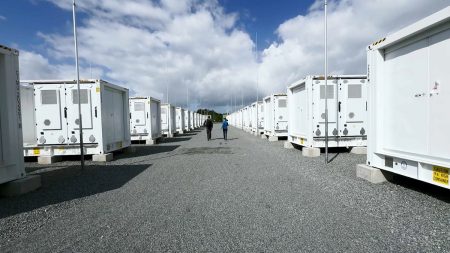Serbia is the only one of ten countries waiting to join the EU that has received an investment-grade credit rating from major agencies. This BBB- rating, achieved after an upgrade by S&P Global, has been praised by European Commission President Ursula von der Leyen. The rating signifies confidence in Serbia’s ability to repay its debts and puts the country ahead of other hopeful EU members like Turkey, Albania, and Montenegro. On the other end of the spectrum, Ukraine has been assessed as having a selective default on foreign currency due to debt restructuring after conflicts. Serbian President Aleksandar Vučić sees the upgrade as a testament to the hard work and resilience of the Serbian citizens, and believes it marks a significant turning point for the country’s economy.
S&P’s decision to upgrade Serbia’s credit rating was influenced by strong domestic demand and investments like the Expo 2027 in Belgrade. However, the agency also highlighted several economic and political challenges facing the country. The EU is Serbia’s largest trading partner, but its path to EU membership is expected to be slow and difficult due to issues like tensions with Kosovo and failure to align with key EU foreign policy decisions. Another potential risk identified by S&P is Serbia’s reliance on Russian gas via the Balkan Stream Pipeline, but this has been partially addressed by a new interconnector supplying Azeri gas as an alternative.
Despite the challenges, the credit rating upgrade is seen as a positive development for Serbia’s economic future. President Vučić views it as a significant milestone that could alter the country’s economic trajectory. The rating upgrade has drawn attention to Serbia’s potential as a solid investment opportunity, and may help attract more foreign capital. This could lead to lower debt costs for the country and further economic growth. Additionally, the increased confidence in Serbia’s financial stability could benefit the overall business climate and encourage further economic development.
The credit rating upgrade has also been seen as a reflection of the government’s efforts to improve Serbia’s economic outlook. The country has implemented various reforms aimed at boosting economic growth and attracting foreign investment. These efforts have started to yield results, as evidenced by the improved credit rating. The upgrade could serve as validation for the government’s policies and could provide momentum for further reforms. It could also boost Serbia’s credibility as a potential EU member, demonstrating its commitment to fiscal responsibility and economic stability.
Overall, Serbia’s achievement of an investment-grade credit rating is a significant milestone for the country’s economic development and its prospects for EU membership. Despite the existing challenges outlined by S&P, the upgrade signals confidence in Serbia’s economic potential and its ability to address current issues. The higher credit rating could open up new opportunities for foreign investment and reduce debt costs for the country. It also serves as recognition of the government’s efforts to improve the economy and could provide a boost to Serbia’s overall economic outlook. While there are still challenges on the path to EU membership, the credit rating upgrade positions Serbia in a more favorable light and could pave the way for further economic growth and development.













